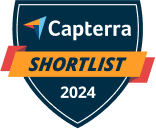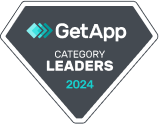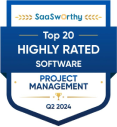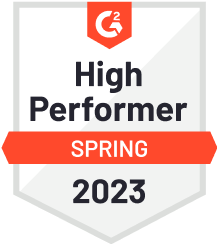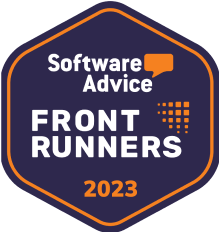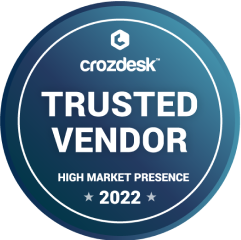When a manager is tasked with managing a project, the manager has to make a crucial decision— the choice of the project management methodology.
To choose the right project management methodology for a project, a manager has to take various aspects into account such as:
Project characteristics:
- Is it highly complex or straightforward?
- Are requirements fixed or flexible?
- What is the project size, timeline, and budget?
Industry:
- Construction, IT, or Healthcare because certain industries have preferred methodologies.
Team and stakeholders:
- Is your team experienced with a particular methodology?
- Are stakeholders readily available for frequent collaboration?
Let alone considering these factors, a beginner informal project manager does not even know what exactly a project management methodology is.
The manager even asks why one needs a project management methodology when we have concepts like project lifecycle, project management knowledge areas, and project management triangle.
In this chapter, we will find answers to these queries and learn about the project management methodology, why we need it, and how to apply it to a project. We will also look at popular project management methodologies.
What is a project management methodology?
A project management methodology is a set of principles, processes, practices, tools, and techniques to help organize and manage a project.
Or in simple words, a project management methodology defines how the knowledge of project management is applied to the project. You can call it a systematic and structured framework of doing and managing things in a project. It offers you a set of rules, techniques, and artifacts to apply the knowledge of project management to the project in an organized way.
Some of the most popular project management methodologies include Waterfall, Agile, Scrum, Kanban, Hybrid, Lean, Six Sigma, and Critical Path Method.
Many professionals confuse project management methodology as a replacement for project management knowledge but, it actually works alongside project management tools, processes, and skills.
Importance of the project management methodologies
A project management methodology is applied to the project to ensure consistent efforts and bring consistent results. Have a look at the key points highlighting the importance of the project management methodologies.
- Brings consistency across projects: A project management methodology standardizes how projects are managed, ensuring repeatability and reducing errors. This results in consistency in managing project operations and brings consistent results.
- Improved collaboration: Every project management methodology comes with its own set of tools and artifacts. This establishes a common language and framework for teams to work together effectively. It helps improve collaboration by reducing miscommunication, preventing misunderstanding, and avoiding conflicts.
- Help you manage complex and large-scale projects: Project management methodologies were designed to deal with the increasing complexity of the project because simple frameworks became insufficient. Methodologies help you manage complex and large-scale projects with proven practices. This speeds up project delivery, improves efficiency, and helps identify and mitigate risks early with structured approaches.
However, the biggest quirk of project management frameworks is it was designed keeping the interests of specific industries in mind.
For example,
- Waterfall methodology for the construction industry
- Lean and Six Sigma for the manufacturing industry
- Agile for the IT industry
- Hybrid for the healthcare industry
Thus, it leads to creation of the various types of project management methodologies.
To make it easy to understand the types of methodologies, it is important to understand the project management approaches because a project management methodology falls into one or the other approach of project management.
Types of project management approaches
A project management approach primarily tells about the way the management of the project is approached. Primarily, there are following three types of project management approaches:
1. Traditional or predictive
This approach follows a linear and sequential model where each phase is completed before the next one begins. It emphasizes detailed planning and execution based on initial requirements and involves a one-time big launch of the finalized product or service. This makes the approach rigid.
It is best when project and product requirements are well-defined and stable at the beginning.
Examples of project management methodologies based on predictive approach include: Waterfall, Critical path method (CPM), and Critical chain project management (CCPM).
2. Adaptive or flexible
This approach follows an iterative, flexible, and incremental model. It breaks a project into small parts and works in short cycles called iterations. It involves the continuous release of the produced deliverables to the market with every iteration for continuous feedback and improvement. This provides the oppurtunity to embrace the change and allows for more flexibility and adaptation due to work being performed in short iterations.
It is ideal for projects where requirements are uncertain, the market is volatile, and dynamics are likely to change throughout a project.
Examples of the project management methodologies include: Agile, Scrum, and Kanban.
3. Hybrid
This approach of project management combines aspects of both predictive and adaptive approaches. It offers the best of both worlds. Some elements of a project follow the principle of the predictive approach and are well-defined and constant, while others follow the principle of the adaptive approach and are subjected to change.
It is ideal for projects with varying degrees of certainty and flexibility.
Examples of the project management methodologies include: Scrumfall.
4. Specialized
There are certain methodologies that do not fall under the above-mentioned approaches or any particular line of approach. For the sake of convenience, we categorize them under the ‘Specialized’ approach.
Each methodology under this approach comes with its unique set of rules, principles, processes, tools, & techniques and is defined separately.
Examples of methodologies included in this approach are: Lean and Sigma.
Popular project management methodologies
Some project management methodologies are more popular than others because they are used most commonly.
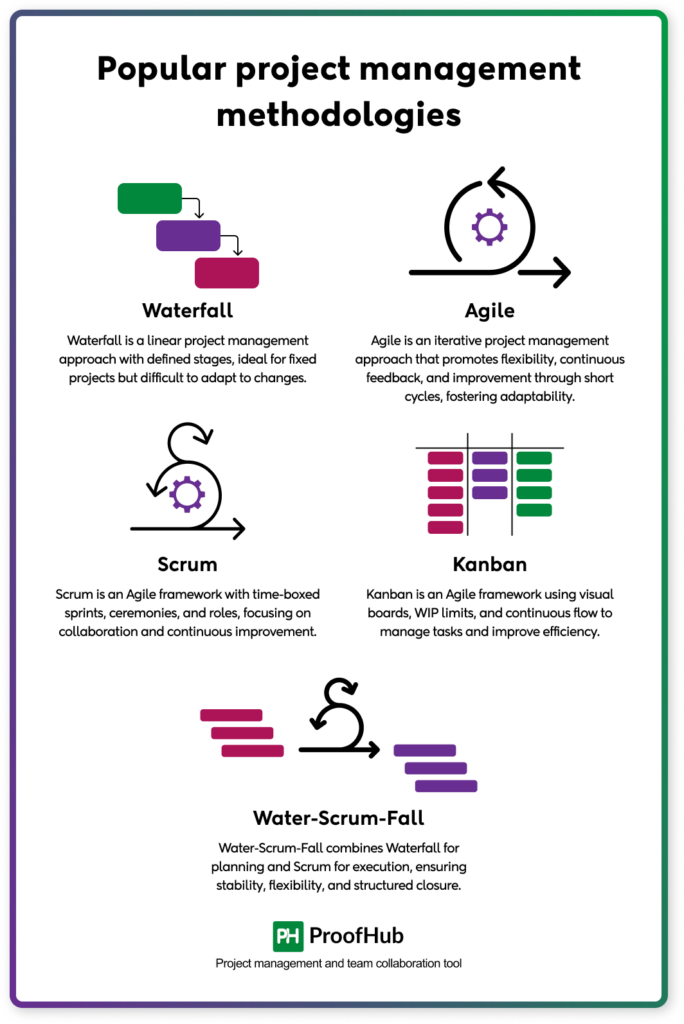
Have a look at five popular types of project management methodologies of managing a project.
1. Waterfall
Waterfall is one of the oldest project management methodologies which follows a linear and sequential path to manage a project. It breaks down a project into distinct stages or phases, ensuring a clear and structured path from conception to completion.
Each phase or stage must be completed before the next one begins and finalized project deliverables are launched in one big launch.
Core stages of the Waterfall
Waterfall has the following six core stages of phases:
- Requirement gathering: This stage defines in-detail project goals, functionalities, and user needs. It is defining the scope of the project comprehensively.
- Designing: Based on the gathered requirements, a detailed blueprint for the project’s architecture and system is created. It is basically creating a plan for the project.
- Implementation: This phase focuses on building the project according to the approved design specifications. It represents the execution of the project plan.
- Testing: Rigorous testing ensures the project functions as intended and meets all requirements. This phase can be referred to as the process of quality control and approval from stakeholders on final deliverables.
- Deployment: The final, tested product is released and made available to users. This stage marks the closure of the project.
- Maintenance: Ongoing support ensures the project’s continued functionality.
The biggest benefit of this methodology is it provides you with a high-level overview of the entire project’s resources, budget, timeline, schedule, and risks. The only thing you need is project requirements upfront to create the entire plan of the project. Therefore, it focuses a lot on comprehensively determining the scope of the project and planning for it.
Core characteristics of Waterfall methodology:
- Structured progress: Progressing through well-defined stages.
- Predictability: Upfront planning outlines project requirements and tasks, fostering predictability and facilitating resource allocation.
- Detailed documentation: Extensive documentation serves as a valuable reference throughout the project and beyond.
Waterfall provides clarity on project requirements, simplifies progress tracking, and facilitates resource management. However, due to the upfront planning, it does not embrace changes during the execution. Because if you change the requirements midway, you need to reschedule your entire project plan. Adapting to changes in requirements mid-project can be difficult and disrupt the entire process, potentially leading to delays and cost overruns. That’s why it is ideal for projects with fixed and well-defined requirements.
Example: Imagine you are working on constructing a home. Waterfall helps you manage a project in the following structured way:
- Requirements phase: Understand the client’s needs (e.g., number of bedrooms, style, and budget) and document these in a design agreement.
- Design phase: Create architectural blueprints and engineering plans and create a plan for materials, timelines, and team roles.
- Development phase: Construct the house step by step such as foundation, walls, plumbing, electrical, and finishing work.
- Testing phase: Inspect the house for issues such as leaks and structural problems and fix issues before the handover.
- Deployment phase: Hand over the keys and provide instructions for maintenance.
- Maintenance phase: Offer warranty repairs. For example, fixing a leaking pipe.
2. Agile
Agile is a project management methodology, which is relatively new and completely opposite of the Waterfall. It follows an iterative and flexible approach to managing a project which involves breaking a project into smaller parts and working on it in short cycles called iterations.
This approach involves the continuous release of the deliverables produced in an iteration to the market, which paves the way for continuous improvement through feedback. The feedback gathered from the stakeholders and end-users at the end of the iteration is utilized to make changes in the next cycle.
This provides the team with the capability to adapt to changes and utilize early feedback from customers to produce deliverables, fulfilling the expectations of the key stakeholders and end-users.
Core characteristics of Agile methodology
- Adaptability: Projects are broken down into short iterations or cycles, which allow for adjustments based on feedback and changing priorities.
- Continuous improvement: Agile involves continuous release of the deliverables to the market. This allows for early feedback from customers and ensures continuous improvement, and the project focuses on delivering real value.
- Continuous collaboration: Agile relies on constant collaboration between teams, stakeholders, and end-customers. It focuses on open communication and constant improvement.
Example: Suppose a team is tasked with building an e-commerce website. Instead of designing the entire platform at once like in Waterfall, they use Agile to divide the project into iterations.
- First iteration: Basic homepage
- Second iteration: Checkout feature
- Third iteration: Build a product catalog page
In the first iteration, the team focuses on creating a basic homepage. The designing, coding, testing, and deployment of the produced deliverables will happen in this iteration, and the team will receive feedback from stakeholders; opposite to the Waterfall which does the designing of the entire website first and then move to coding, testing, and deployment step-by-step.
Based on the feedback, they refine the homepage in the next sprint (if required) while working on the next feature.
This iterative process is followed for every feature, allowing to make improvements and quickly adapt to changes.
Agile methodology is applied to the project through frameworks like Scrum and Kanban.
3. Scrum
Scrum is more of a framework than a methodology under Agile. It is discussed separately as a methodology because it uses certain tools, processes, and artifacts that are applicable only to Scrum.
Scrum is a type of Agile methodology that divides work into fixed-length small, time-boxed iterative cycles, called sprints, usually of 1-4 weeks. Each sprint ends with a deliverable that is of value to the user. The produced deliverable is released for the feedback and improvements suggested are worked into the next sprints.
At the beginning of each sprint, there is Sprint planning facilitated by the Scrum Master where the Scrum Team picks the features for the sprint based on the story points from the Product Backlog prioritized by the product owner. At the end of each sprint, there is a Sprint retrospective which reflects on what went well and how to improve in the next sprint. This paves the way for continuous improvement.
Core characteristics of Scrum
- Time-boxed sprints: Short-length, time-boxed iterations, usually of 1-4 weeks where specific tasks of a project are completed. Each sprint ends with a deliverable of real value to the user.
- Ceremonies: Define what happens in a sprint. It includes:
- Sprint planning: Team selects tasks for the sprint.
- Daily standups: Short daily meetings to discuss progress and obstacles.
- Sprint review: Present completed work to stakeholders for feedback.
- Sprint retrospective: Reflect on what went well and how to improve in the next sprint.
- Artifacts: Common language to foster collaboration in a team. It includes:
- Product backlog: A prioritized list of tasks, features, or user stories that need to be completed.
- Sprint backlog: A subset of the product backlog chosen for the sprint.
- Increment: The working product delivered at the end of the sprint.
- Defined roles: Defines the responsibilities of a sprint team.
- Product owner: Responsible for prioritizing tasks in the Product Backlog.
- Scrum team: Cross-functional members who create the deliverables.
- Scrum master: One who facilitates collaboration to make sure the team can work without any hurdles and ensures the team follows Scrum practices.
Scrum is an ideal framework for projects where requirements evolve.
For example, in software development where stakeholders need regular updates and deliverables and the project requires strong collaboration among team members.
4. Kanban
Kanban is also an Agile framework which is also discussed as a type of Agile project management methodology. It also focuses on continuous release and continuous improvement by breaking a project into small user stories, but it uses its own artifacts. It does not have a Product Backlog and Sprints rather it uses a Kanban board and WIP limits.
Kanban board is a visual workflow that represents the user stories or features on a board in columns like To do, In progress, and Done. All the work to be completed in a project sits in the To-Do column and the team picks the work to be completed based on the team’s capacity using WIP limit.
A WIP limit is a rule that limits the amount of work to be done based on the team’s capacity. It is set on the column and signifies the maximum number of tasks that can be present in the specific column. For example, the WIP limit of 3 on the “In Progress” column signifies only 3 tasks can be present at any time in the in-progress stage.
The team works on the pulled features or stories from To-do column based on team capacity, works on them, and delivers continuously as soon as the user story or feature is completed for feedback. This loop repeats and ensures fast delivery and enhanced flexibility.
Kanban methodology helps you easily identify bottlenecks by visualizing tasks on the Kanban board and prevent overloading of the team members by limiting work in progress using WIP limits. It is a simpler, more flexible framework compared to Scrum.
Core characteristics of Kanban
- Visual workflow: Tasks are represented on a Kanban board with columns like To Do, In Progress, and Done.
- Work in progress (WIP) limits: A set maximum number of tasks can be in a specific column
- Continuous flow: Tasks move through the workflow as soon as capacity is available from stages like To Do, In Progress, and Done
Kanban is an ideal framework for projects where you have to manage ongoing and repetitive tasks.
For example, operational teams like customer support where tasks arrive unpredictably and need to be addressed as they come and the focus is on efficiency and minimizing delays.
5. Water-Scrum-Fall
Water-Scrum-Fall is a hybrid project management methodology that combines elements of Waterfall and Scrum methodologies to manage projects that require both stability and flexibility.
It utilizes the principles of Waterfall during the planning and principles of Agile-Scrum during the execution and development. The closure again follows the structured process of final testing, integration, and delivery. Thus, it is named Water-Scrum-Fall.
The methodology uses regular checkpoints to ensure that Agile outputs align with Waterfall milestones.
Core characteristics of Water-Scrum-Fall
- Upfront planning using Waterfall: Establish high-level requirements, budgets, timelines, and scope and build documentation to clarify and meet client or organizational expectations.
- Scrum for execution and development: During the execution, development teams use Scrum practices which provides the flexibility to the teams to adapt to changing requirements and priorities. It includes:
- Iterative sprints.
- Daily stand-ups, sprint reviews, and retrospectives.
- Delivering increments after each sprint for continuous feedback and improvement.
- Closure using waterfall: Final testing, integration, and delivery may follow a structured process.
This methodology is ideal for a project that requires significant upfront documentation and approval processes and client demands Agile development.
Example: Imagine developing a banking application.
- Initiation and planning using Waterfall: Initial requirements gathering for regulatory compliance and getting approval of budgets, timelines, and high-level system design.
- Development using Scrum: Agile team begins iterative development:
- Sprint 1: Create the login feature. Feedback from users leads to iterations, such as adding social media login options.
- Sprint 2: Make improvements in login features and build the account dashboard. The development evolves incrementally with regular customer feedback.
- Sprint 3: Add transaction processing.
- Closure using Waterfall: System-wide integration testing and final approval and deployment to live systems.
Key differences between methodologies
There are certain differences between various methodologies. Learning about those differences is important to understand and choose the right methodology for your projects.
Waterfall vs. Agile
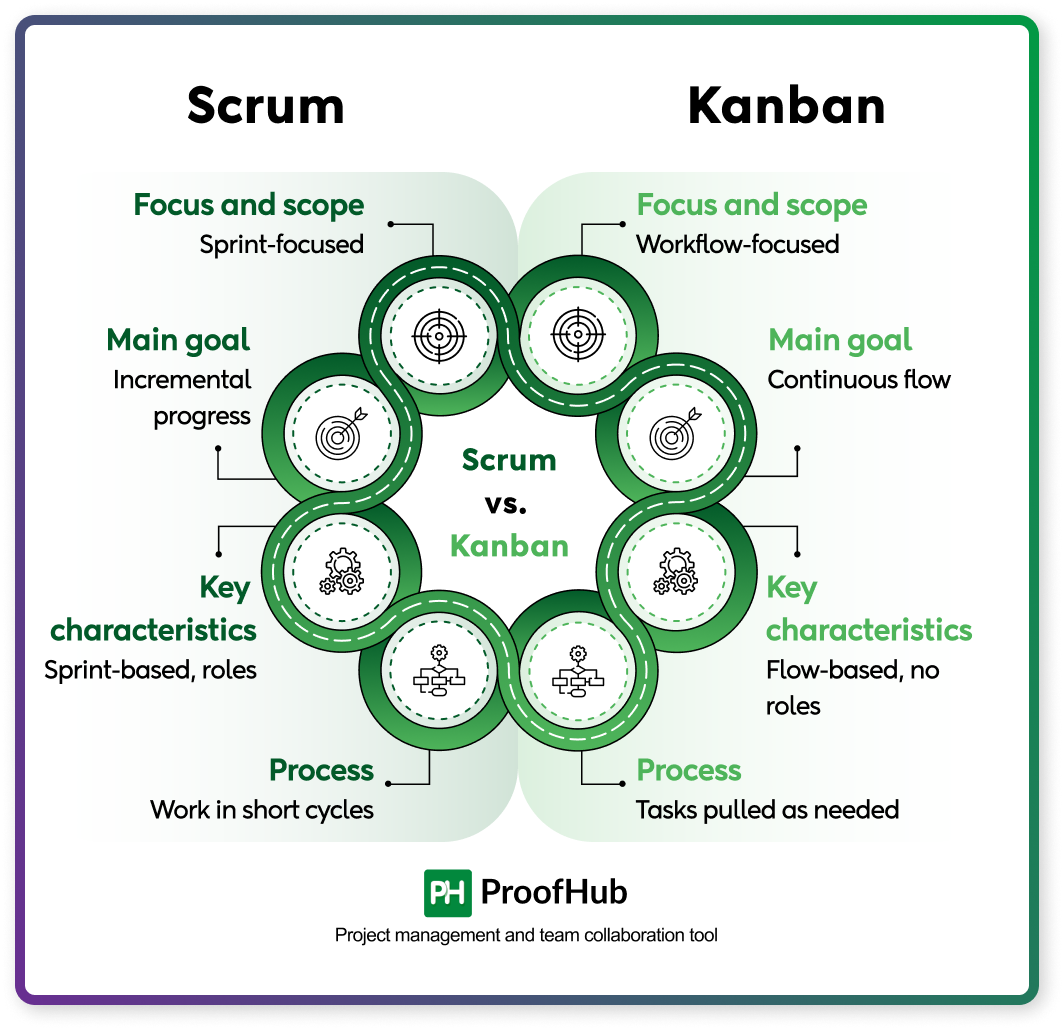
Waterfall and Agile are the two most widely used project management methodologies. Each has a distinct way of approaching a project, artifacts, tools, processes, and techniques.
Here’s a detailed comparison table highlighting their key differences:
| Criteria | Waterfall | Agile |
| Approach | Linear and sequential | Iterative and flexible |
| Workflow | Each phase must be completed before the next one begins | Cyclical process with iterative sprints. Changes can be made |
| Planning | Detailed planning upfront, including all requirements, timelines, and costs | Overview planning upfront; detailed planning happens iteratively |
| Delivery | Delivered only at the end of the project | Delivered incrementally at the end of each sprint or iteration |
| Testing | Testing happens at the end after all development is completed | Testing is continuous and occurs throughout the development cycle |
| Customer feedback | Feedback typically only gathered at the end of the project | Frequent feedback throughout sprints or iterations |
| Documentation | Heavy documentation is required at every phase | Lightweight documentation. Relies on collaboration and prioritizes working software |
| Change | Resist change due to rigid structure | Embrace change due to flexibility |
| Best for projects | With fixed and clearly defined requirements such as construction | With uncertain and changing requirements such as software development |
Scrum vs. Kanban
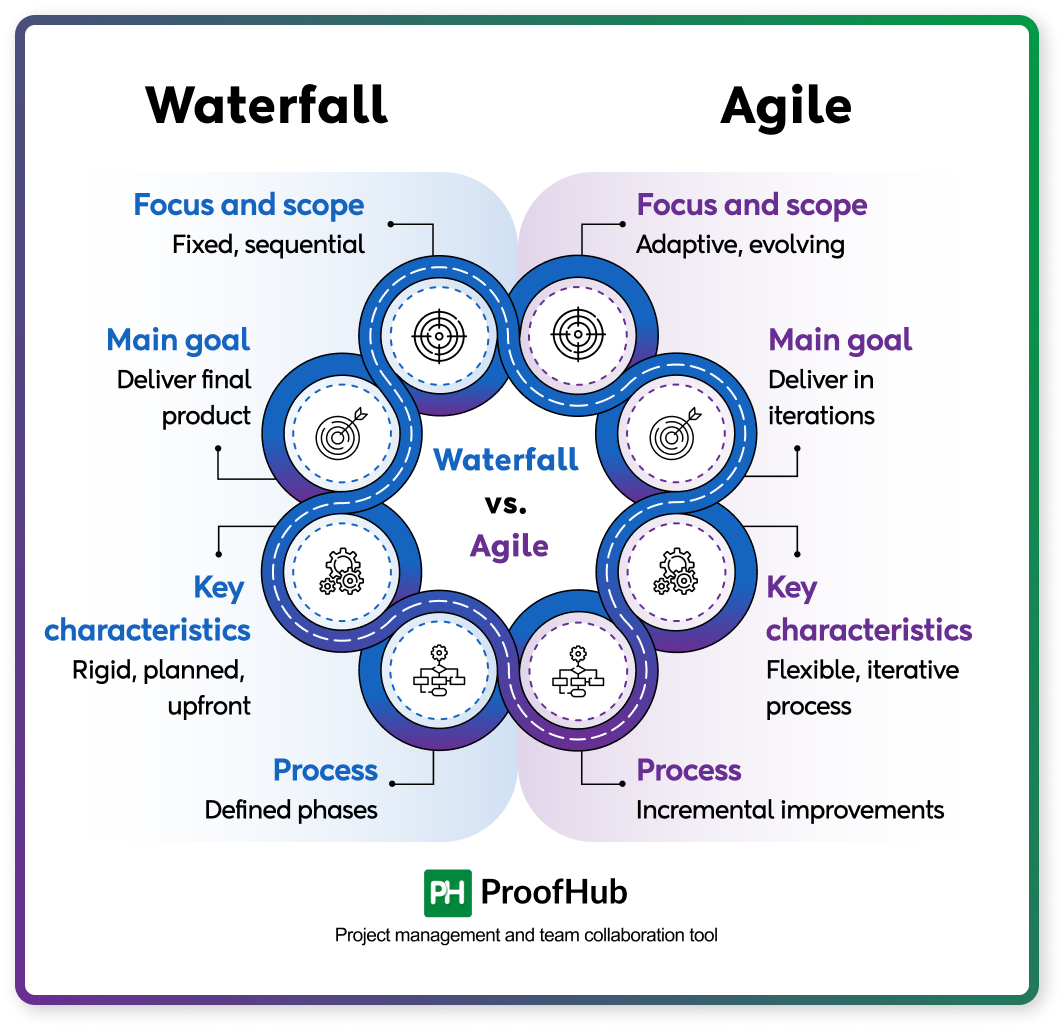
Scrum and Kanban are two popular frameworks within the Agile methodology. Both embrace changes and focus on continuous release, feedback, and improvement yet they are distinct in their approach to managing work.
Here’s a detailed breakdown of the key differences:
| Criteria | Scrum | Kanban |
| Approach | Work is divided into fixed-length iterations called sprints, usually of 1–4 weeks | Continuous workflow, no-time boxed sprints. Use WIP limits to match the work to team’s capacity |
| Workflow Board | Tasks are prioritized and picked from the Product Backlog for the sprint. Contains tasks only for the current sprint | Tasks are pulled from the Dynamic Backlog on the Kanban board based on immediate needs, matching with WIP limit. Contains all tasks in the workflow |
| Planning | Requires upfront planning for the sprint planning | No upfront planning. Stories are added and completed as required |
| Delivery | At the end of each sprint | Continuous delivery as story is completed |
| Roles | Defined roles: Scrum Master, Product Owner, and Scrum Team | No specific roles |
| Metrics | Use Sprint Velocity to measure the amount of work completed in a sprint | Use Lead Time and Cycle Time to measure how long a task takes to complete from start to finish |
| Best for projects | With evolving and flexible requirements | With ongoing and repetitive tasks |
Other project management methodologies
There are other project management methodologies that might provide you with a better way of managing projects. Have a look at them.
1. PRINCE 2
PRINCE2 (Projects in Controlled Environments) is a process-based project management methodology that emphasizes organization, risk management, and control throughout a project’s lifecycle. It divides projects into manageable stages, ensuring clarity and accountability.
PRINCE2 offers a highly structured approach with predefined roles, unlike Agile’s adaptable, team-centric framework. It is well-suited for large-scale, high-risk projects requiring clear accountability.
Core attributes of PRINCE2
- Defined roles: Ensures everyone understands their responsibilities.
- Focus on business justification: Every project must deliver value aligned with business goals.
- Stage-by-stage planning: Projects are divided into clear, controllable stages.
- Risk management: Identifies and mitigates risks proactively.
- Scalable framework: Adaptable to projects of various sizes and complexities.
PRINCE2 is ideal for projects with strict deadlines, budgets, and compliance needs, such as IT system implementations or public sector initiatives. However, PRINCE2’s rigidity and documentation requirements can slow progress in dynamic or fast-moving industries.
2. Critical path method (CPM)
The Critical Path Method (CPM) is a scheduling and project management technique used to identify the most critical tasks for timely project completion. It helps project managers create an optimized project schedule by focusing on tasks that directly impact the overall timeline.
Core characteristics of CPM
- Task-oriented network: CPM meticulously identifies all project tasks and their interdependence. This provides a comprehensive overview for effective project execution.
- Task duration estimation: CPM uses a network diagram to represent the project, where tasks are depicted as nodes and dependencies between them are shown as arrows. This visual representation aids in understanding the flow and interconnections of tasks.
- Critical path calculation: CPM calculates the longest sequence of tasks that must be completed on time for the project to finish, known as the critical path. This critical path serves as a guide for project managers to prioritize tasks effectively.
CPM is particularly well-suited for large-scale, complex projects with well-defined tasks and clear dependencies. These projects often involve multiple teams and require meticulous planning and scheduling.
3. Critical chain project management (CCPM)
Critical chain project management (CCPM) is a project management methodology that focuses on resource constraints and efficient resource utilization to improve project success rates.
While the critical path method (CPM) focuses on task dependencies, CCPM takes it a step further. It also considers resource limitations in terms of the criticality of the tasks. This ensures tasks are aligned with available resources, preventing bottlenecks and underutilized personnel.
Core characteristics of CCPM:
- Resource allocation: When resources are limited, CCPM helps managers allocate work efficiently. This ensures teams aren’t overloaded and tasks aren’t stalled due to a lack of necessary resources.
- Buffers: CCPM acknowledges that projects rarely go according to perfect plans. To address this, it introduces buffers. These are time cushions strategically placed within the critical chain to absorb unexpected delays.
- Buffer as indicators: When resources are limited, CCPM helps managers allocate work efficiently. This ensures teams aren’t overloaded and tasks aren’t stalled due to a lack of necessary resources.
Throughout the project, the project manager closely monitors the chain and buffers for bottlenecks, inefficiencies, and areas for improvement.
CCPM is usually employed in a multi-project environment where teams are simultaneously working on multiple projects, it can also be used in other projects too.
4. eXtreme Programming (XP)
eXtreme Programming (XP) is a prominent Agile software development methodology designed to enhance software quality and responsiveness to changing customer requirements. It is particularly suitable for projects where requirements are uncertain.
Core attributes of eXtreme Programming
- Customer-centric development: XP emphasizes close collaboration with customers.
- Iterative and incremental releases: The methodology promotes frequent releases of small, functional software increments.
- Test-driven development (TDD): In XP, tests are written before the actual code. This practice ensures that the code meets specified requirements from the outset.
- Pair programming: Two developers work together at one workstation, fostering collaboration and knowledge sharing.
- Continuous integration: Code changes are integrated into the main branch frequently, allowing teams to detect issues early in the development cycle.
- Refactoring: XP encourages regular code refactoring to improve structure and maintainability without altering functionality, ensuring that the codebase remains clean and efficient.
5. Lean
Lean methodologies borrow from both traditional and agile approaches, aiming for efficiency and continuous improvement. It emphasizes delivering value to the customer while eliminating waste throughout the project lifecycle.
Core attributes of Lean methodology
- Focus on value: Similar to Agile, Lean prioritizes delivering value to the customer. It uses techniques like value stream mapping to identify and eliminate non-value-added activities.
- Reduced waste: Lean principles strive to eliminate waste (muda) in all its forms – unnecessary steps, rework, delays, etc. This focus on efficiency optimizes project resource allocation.
- Continuous improvement: Like Agile, Lean embraces an iterative approach. The focus is on constantly evaluating and improving the project delivery process.
- Structured yet adaptable: Lean borrows the planning structure of traditional methods but allows for adjustments based on learning and feedback. This creates a balance between predictability and flexibility.
Lean project management methodology is focused on delivering a product or service that meets customer needs efficiently. You can also implement these methodologies when you need to improve the process efficiency. The project seeks to constantly improve and adapt based on learning.
6. Six Sigma
Six Sigma is a data-driven methodology aimed at improving processes by reducing variability and defects. Its focus is on achieving measurable and sustainable quality improvements by using statistical analysis to identify and eliminate inefficiencies. Originating in manufacturing, Six Sigma is now widely applied in various industries to ensure consistency and enhance customer satisfaction.
Unlike Agile, which emphasizes adaptability and iterative progress, Six Sigma is more rigid and data-centric. Agile thrives in environments requiring flexibility, while Six Sigma is ideal for optimizing repetitive, measurable processes with a structured approach.
Core attributes of Six Sigma:
- Data-driven: Decisions and improvements are based on statistical analysis and metrics.
- Customer focus: Prioritizes meeting customer requirements and achieving high satisfaction.
- Structured framework: Uses tools like DMAIC (Define, Measure, Analyze, Improve, Control) for problem-solving.
- Focus on defect reduction: Aims for near-perfect processes, with only 3.4 defects per million opportunities.
- Cross-functional collaboration: Encourages teamwork across departments to achieve shared goals.
Six Sigma works best for organizations that handle high-volume, repetitive processes where defects or inconsistencies significantly impact quality or customer satisfaction. Industries like manufacturing, healthcare, and logistics benefit most from this methodology.
Choosing the right methodology for your project
Choosing the right project management methodology for a project is crucial for its success. Selecting the most effective project management methodology depends on the project’s goals, scope, complexity, team dynamics, and stakeholders’ expectations.
Here’s a detailed guide to help you determine which methodology to use:
- Project characteristics: Size, complexity, and scope all play a role. A smaller and well-defined project with fixed requirements might thrive with a simpler methodology like Waterfall, while a larger and complex project with evolving requirements might benefit from a more structured approach like Agile or Hybrid.
- Customer requirements: Understanding your customer’s needs is crucial. Do they require frequent updates and involvement? Agile methodologies excel in such scenarios. For a project with a fixed set of deliverables and minimal changes, a more traditional method might suffice.
- Team characteristics: Think about your team’s skills and experience. Does the team prefer structured roles or self-organization? Agile methodologies work well for adaptable teams comfortable with continuous learning and self-organizing. Whereas, Waterfall methodologies might be better suited for teams with established processes and structured roles.
- Industry type: Each industry has its unique characteristics and certain industries favor specific methodologies. For example, if your project requires strict documentation and compliance with regulations such as construction and healthcare, you need to opt for a Waterfall or Hybrid approach. On the other hand, if your project requires frequent feedback from the end-users such as software development, you need to opt for Agile methodology.
- Organizational culture: Consider your organization’s work style and preferences. Does your team thrive in a collaborative environment? Agile methodologies might be a good fit. Does your organization have a history of well-defined, structured workflows? Waterfall methodologies might be more suitable.
Keeping these factors in mind you can choose the right project management methodology for your project.
How to apply a methodology as a beginner
Applying a project management methodology as a beginner can seem daunting at first, but it becomes easier once you break it into manageable steps. You can follow these steps:
- Understand the methodology: Learn the basics of the project management methodologies: key principles, practices, and tools.
- Evaluate your project: Define goals, gather requirements from stakeholders, and assemble the team. It helps you clearly articulate what the project aims to achieve, find out stakeholders’ needs, and identify who will work on the project.
- Leverage project management software: Execute the methodology using project management software like ProofHub. It helps you organize and manage tasks in a way described in the chosen methodology.
- Monitor and adapt: Track the progress of the project using the methods described in the methodology. For example, track Velocity for Scrum and lead time for Kanban or Milestones for Waterfall to ensure the project is on track.
- Reflect and improve: Learn from mistakes. If something doesn’t work, adapt and improve. Also, document what works to build a comprehensive understanding.
